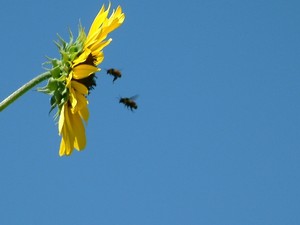04 Feb Wed 2009
Tillage helps plants grow
You can learn a lot about farming from looking at your car or truck in the early hours of the morning.
Sometimes, they are covered with a fine layer of frozen water because the air inside is of a different temperature than the air outside. This forces the water in the air that touches the vehicle’s shell (usually the windows, for they convey the temperature best) to solidify upon the surface in the form of ice.
When it warms, it melts and sinks into the soil. This is water that would have never entered the soil otherwise.
When you till your fields, you create many such small air pockets. When the temperature changes every night, the air inside the air pockets remains about the same, and forces water to condense on the field and within the numerous pores your tillage has made. This increases the amount of available water, and increases your crop yields.
Tillage also decreases evaporation by insulating moist lower soil levels with moist air, and also decreases run-off when rain occurs.
Some scientists have found that the act of tillage can, when done poorly, reduce soil moisture 25%. But regular tillage improves soil composition and structure to increase moisture levels.
Tillage changes the soil composition in two ways. The first is by adding water, the second is by adding air. By adding these two ingredients together, the microflora in the soil are able to produce the chemicals plants need to live and grow, Nitrogen, Phosphorous, Potassium, Copper…everything that is required for life.
But tillage also affects plants directly. Trimming plant roots by tilling in the aisle results in the damaged root putting forth new, smaller roots. These small roots have more mouths per inch and are able to eat better than older, larger roots. They also have loose soil to eat, which is easier for them to ingest. This soil is better fertilized by the microflora.
Tillage is good for plants!
For further reading, we suggest the excellent work of Dr. M.J. Goss, especially his “Losses of nitrate-nitrogen in water draining from under autumn-sown crops,” printed in the Journal of Soil Science, 1993,44,35- 48
Also, read Jethro Tull’s experimental data published in his “Horse Hoeing Husbandry,” 1731.
You can also do your own research to confirm these results! Contact us for FREE experimental instructions and supplies: consultus@rerustica.com, or 559-977-7539.

